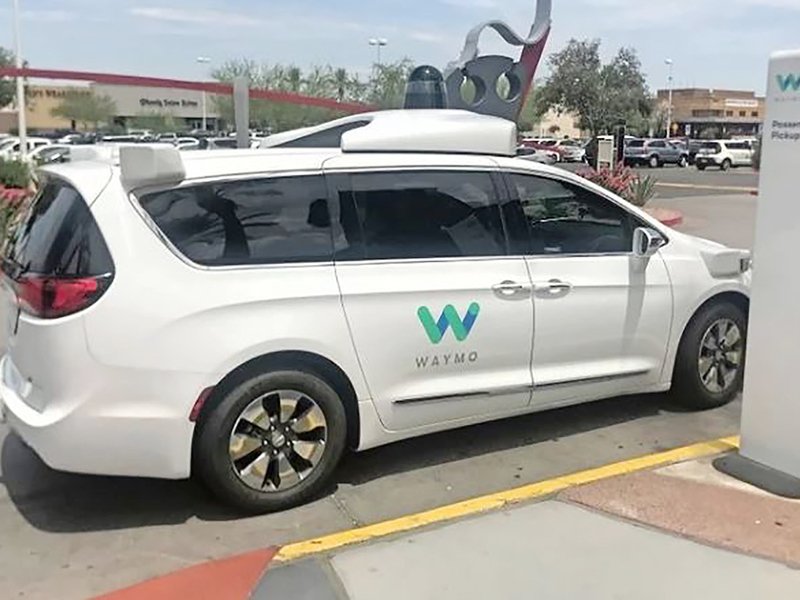
In a development that perhaps illustrates the high cost of transforming self-driving technology into a polished product, Waymo said Monday it has raised $2.25 billion in its first external funding round.
Further investment is expected soon.
Waymo CEO John Krafcik said the money is just the initial part of its first funding round, and that more external investments will be made soon.
“We’ve had some additional inbound interest and will be evaluating other future potential external investors as well,” he said.
Waymo did not disclose the valuation of the company. Investment bank Morgan Stanley estimated its value was $105 billion in September 2019. A year earlier, the firm had said Waymo was worth $175 billion, but the cut came amid broader industry headwinds on the readiness of self-driving technology.
More than a decade into developing its self-driving system, Google-backed Waymo has largely been considered a frontrunner in developing and commercializing a self-driving system by industry analysts. Competitors in the global push include traditional automakers such as General Motors and Ford Motor Co., suppliers like Aptiv and Mobileye, and tech companies like China’s Baidu and Russia’s Yandex.
Delivery push
In establishing its commercial business amid industry uncertainty, Waymo will increasingly eye deliveries.
Along with the investment, Krafcik said the company has started Waymo Via, a new unit focused on hauling packages. That may run the gamut of carrying goods over long distances in Class 8 trucks to making one-off deliveries with Chrysler Pacifica minivans, as Waymo already does in small-scale partnerships with United Parcel Services and AutoNation Inc.
Both a truck-testing program and Pacifica-based delivery project had existed in ala carte forms beforehand, with testing of both based in metro Phoenix. Combined, they may portend bigger things.
Via is for “folks who want to move goods from A to B, from the interstate to precise local deliveries,” Krafcik said.
As the broad industry ambitions to launch commercial self-driving taxi services have lagged, there’s been an increasing shift toward these sorts of delivery applications. Those efforts were fortified last month when the U.S. Department of Transportation granted its first exemption from federal motor vehicle safety standards to Nuro, a company that developed the R2, a vehicle platform that has no room for human occupants.
Funding partners
Private equity firm Silver Lake Partners led Waymo’s funding round, along with Canada Pension Plan Investment Board and Mubadala Investment Company. The first two will both hold seats on a newly created board that will oversee Waymo. Krafcik and members of Alphabet Inc., Google’s parent company, will also sit on the board.
The infusion of outside investment “is along the evolutionary path we have always imagined,” Krafcik said.
Mubadala is a global investment company based in the United Arab Emirates. Its involvement in the funding round accentuated Waymo’s global ambitions, and Krafcik confirmed that expansion to Middle Eastern markets was a possibility going forward.
Investors also included Alphabet itself, venture capital firm Andreessen Horowitz, global supplier Magna International and auto-retail giant AutoNation, the latter of which invested $50 million, according to a regulatory filing.
Magna has already worked as a partner with Waymo, upfitting the company’s self-driving systems onto Jaguar’s electric I-Pace and Fiat Chrysler’s Pacifica minivans at a factory in Detroit. Krafcik held the Magna partnership out as an example of how Waymo would likely look to partner with others in the future.
“Waymo’s DNA is probably not as a Tier 1 supplier,” he said. “Our role is to build the world’s most experienced driver, and that’s why we want to partner with companies like Magna and focus on integrating into vehicles. Look for more partnerships like that.”
The investment comes at a time when Waymo plans to launch its fifth-generation self-driving system later this year, which will first be deployed on the I-Pace vehicles. That will arrive with a redesigned sensor suite, expanded computing performance and added all-weather capabilities. Those changes should allow company’s systems to be deployed in a wider range of “geo-zones,” Krafcik said.